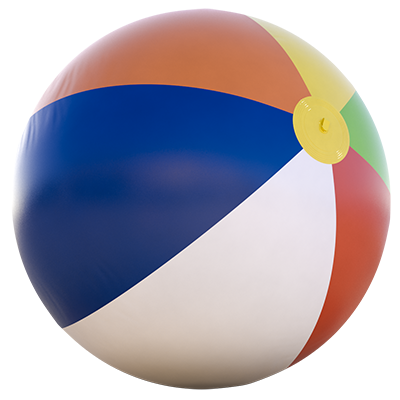As the modern design movement took hold in Palm Springs in the 1950s and 1960s, architects began to experiment with futuristic aesthetics on a large, public scale. Even buildings like banks and city offices, which were typically constructed in Greek revival styles with classical columns and other symbols of stability, were reimagined to reflect a modern look. One of the best examples is the 1959 City National Bank in Palm Springs, which now houses a Bank of America branch.
Located downtown at 588 South Palm Canyon Drive, the bank resembles a vibrant blue-and-white mushroom. Its eye-catching triangular shape, bulbous styling, and rounded roof may seem straight out of a period cartoon, but there's plenty of function in this form. A wide roof overhang cools the entire structure. Decorative aluminum sun-screens originally shaded the west-facing glass from the sun. The building was sited on the lot to make it easily accessible to drivers on Palm Springs' main thoroughfare.
Architect Rudy Baumfeld of Victor Gruen and Associates dreamed up the unique expressionistic shape, inspired by the 1954 Chapel Notre Dame du Haut in Ronchamp, France. The chapel's Swiss-French architect Le Corbusier embraced the idea that midcentury modern design didn't have to mean geometric boxes and sleek industrial lines; it could also take more organic forms.
Baumfeld also credited the adobe structures of the American Southwest for inspiring the bank's thick masonry walls, which are curved to provide structural support.
A popular architecture magazine of the mid-20th century called this bank "the most beautiful bank in America," and much of it remains the same as the day it opened. The bank's exterior blue glass tile still gleams, and the luxe interior was designed to entice new customers. A bank of floor-to-ceiling windows filled the space with light, which was reflected on marble counters and terrazzo floors. While 1950s patrons waited for a teller, they could weigh themselves on a built-in scale or check the time on a futuristic wall clock.


